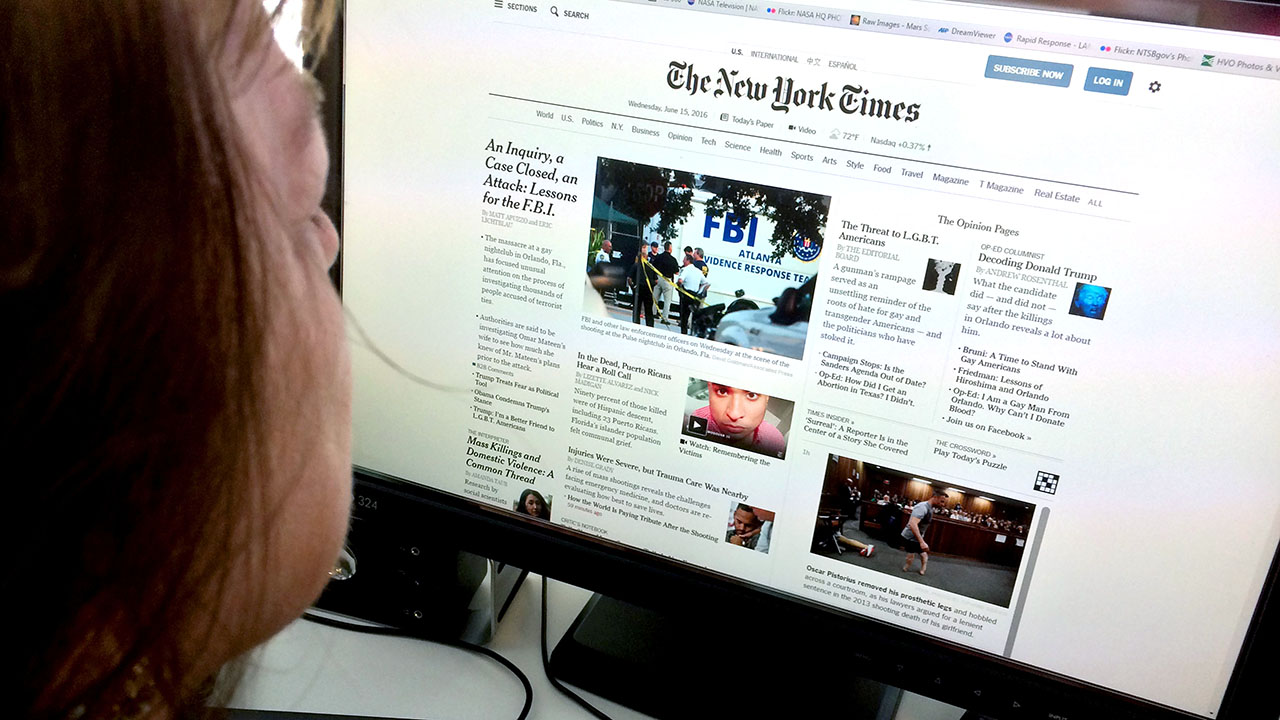DW News Offering Honest Perspectives on Global Matters
DW News Offering Honest Perspectives on Global Matters
Blog Article
The Advancement of Journalism in the Age of News Online
In the rapidly altering landscape of journalism, the electronic age has actually ushered in a brand-new era where the immediacy of online news reshapes both its development and intake. The surge of citizen reporters and independent voices further complicates the narrative, contributing to a lively yet perilous media environment.

Surge of Digital News Operatings Systems
The surge of digital information systems has essentially changed the landscape of journalism, marking a shift from standard print media to vibrant, online areas. This development was moved by innovations in technology and the boosting access of the internet, which allowed news to be shared swiftly and broadly. Unlike their print counterparts, electronic platforms can quickly upgrade web content, providing real-time news protection and analysis that charms to the modern-day viewers's need for immediacy and relevance.
Digital systems have actually additionally expanded the extent of journalism, enabling a diversification of point of views and voices. With lower barriers to entrance, independent journalists and smaller news organizations can reach worldwide audiences, challenging the monopoly as soon as held by developed media empires. This democratization of information has improved the public discussion, using varied narratives and accommodating particular niche passions that were previously underserved.
Additionally, the integration of multimedia aspects such as video, sound, and interactive graphics enhances narration, making information more available and appealing (dw news). This multimedia approach not just brings in a more comprehensive audience but also help in the understanding of complicated stories. Fundamentally, electronic platforms have redefined journalism, cultivating technology and flexibility in an ever-evolving media atmosphere

Influence of Social Media Site
Social media platforms have further changed journalism by changing just how information is eaten and shared. Furthermore, social media has increased target markets, giving journalists accessibility to worldwide viewership beyond geographical restraints.

The interactive nature of social networks fosters involvement, enabling target markets to take part in discussions, share point of views, and add to news stories. This interaction improves the dynamic in between journalists and their target markets, advertising a much more participatory form of journalism. Nevertheless, this also places tremendous pressure on reporters to produce material that resonates with target markets, often focusing on sensationalism to capture interest.
Moreover, social networks platforms have actually come to be crucial tools for journalists to resource stories, assess public point of view, and network with sector peers. By keeping track of trending subjects and user-generated web content, journalists can discover tales that might otherwise be forgotten. Yet, the reliance on social networks likewise demands a crucial analysis of sources to ensure the credibility of information shared. In this progressing landscape, flexibility remains essential for reporters to grow.
Obstacles of False Information
Amidst the digital revolution of journalism, one considerable difficulty is the pervasive spread of misinformation. In an era where information is abundant and quickly obtainable, identifying in between credible information and made material has become increasingly difficult. The sheer volume of info shared across various online systems usually obscures the line between fact and fiction, posturing a significant threat to the integrity of journalism.
False information can spread out rapidly via social media sites, where algorithms prioritize involvement over accuracy, inadvertently intensifying incorrect narratives (dw news). This not only undermines public trust in media establishments however also cultivates an environment where deceitful material can influence popular opinion and decision-making processes. The obstacle for journalists is twofold: to disprove falsehoods successfully visit their website and to support strenuous standards of fact-checking and verification
Further complicating this problem is the existence of deepfakes and innovative disinformation projects that leverage progressed modern technologies to produce misleading material equivalent from reputable reporting. As these technologies progress, so have to the methods and devices used by journalists to battle them. Resolving misinformation needs cooperation in between media organizations, innovation firms, and policymakers to develop detailed strategies that protect the credibility of details in the digital age.
Function of Person Reporters
Navigating the landscape of misinformation highlights the transformative influence of person journalists within the digital realm. As standard media electrical outlets grapple with the sheer speed and quantity of information circulation online, person reporters-- ordinary individuals armed with mobile phones and accessibility to social media sites-- are playing an increasingly critical function. These grassroots factors have actually come to be crucial in covering occasions promptly, usually providing real-time updates from the ground before mainstream media can respond.
Citizen hop over to these guys journalists have actually equalized information reporting, enhancing voices that might or else continue to be unheard. By leveraging platforms like Twitter, Facebook, and Instagram, they offer varied viewpoints that test the narratives frequently pressed by established media.
Nevertheless, person journalism is improving the media landscape, compelling conventional electrical outlets to adapt by integrating user-generated web content right into their reporting. By fostering area interaction and encouraging participatory journalism, these electronic writers add to an extra dynamic and inclusive news ecosystem. As person journalists remain to progress, their role in forming public discourse remains an essential part of contemporary journalism.

Future of Journalistic Honesty
As the electronic age remains to progress, the future of journalistic stability faces unprecedented obstacles and possibilities. The expansion of digital platforms has actually equalized information circulation, making it possible for a broader variety of voices to add to the information landscape. Nonetheless, this has also led to the spread of false information and the erosion of rely on media. In this setting, preserving journalistic integrity ends up being critical, requiring adherence to extensive honest standards and fact-checking processes.
The increase of artificial intelligence and algorithm-driven material curation better makes complex the landscape. While AI can enhance coverage by examining vast datasets and determining trends, it likewise poses dangers of prejudice and control. Reporters must consequently stay attentive, guaranteeing that innovation works as a tool for fact rather than distortion.
Moreover, the economic pressures on traditional media electrical outlets require innovative service designs More Info to maintain high quality journalism. Subscription-based models, not-for-profit funding, and collaborations with tech firms are arising as potential options. Yet, they should be sought without jeopardizing content independence.
Inevitably, the future of journalistic stability relies on the commitment of media and reporters organizations to promote transparency, responsibility, and a steadfast commitment to truth, in the middle of a swiftly changing electronic globe.
Final Thought
The development of journalism in the electronic age presents both challenges and opportunities. The rise of digital news platforms and social media has democratized info dissemination, empowering a varied selection of voices, consisting of person journalists.
The increase of digital news platforms has fundamentally transformed the landscape of journalism, noting a change from typical print media to vibrant, on-line rooms. With reduced barriers to entrance, independent journalists and smaller sized information organizations can reach global audiences, testing the syndicate when held by developed media corporations.Social media platforms have better changed journalism by modifying exactly how news is eaten and shared. As typical media electrical outlets grapple with the sheer speed and quantity of news dissemination online, person journalists-- normal people armed with smartphones and accessibility to social media-- are playing a significantly essential function. The surge of electronic news systems and social media has actually democratized details circulation, empowering a varied variety of voices, including person reporters.
Report this page